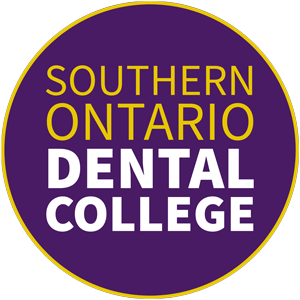Dental Care Advancements Hygienists and Assistants Should Know About
Do you love visiting the dentist?
Most people don’t get excited about dental visits. Who wants someone poking around in their mouth anyway?
A large part of the population has an extreme fear of dentists.
But not you, right? In fact, you don’t mind the dentist at all and have even thought about a job in the dental field.
There’s a demand for dental hygienists and dental assistants. And with advances every year in dental care, that demand shows no sign of slowing down.
Take a look at 5 recent advances in dental care!
After reading about new dental technology and how it helps dental care providers make patient’s visits better, maybe you’ll be ready for your new career!
1. No Drill Dentistry
There’s an old television commercial where the actress claims “it’s the bill, not the drill” that makes her avoid scheduling dental appointments.
The financial fear of visiting the dentist is valid but how many individuals have been interviewed recently about their fear of the dentist who doesn’t say they’re afraid of the drill?
Fear of the drill will soon be a thing of the past once more dental practices opt for laser dentistry.
Also called no-drill dentistry, this recent advance in dental care uses a powerful but entirely safe laser. Laser dentistry treats multiple dental conditions including:
- Root canal infections.
- Gum disease.
- Gum inflammation.
- Gum reshaping
If a dental practice uses the DIAGNOdent pen, lasers can check for cavities and periodontitis. For dental patients, laser dentistry means little to no pain and typically less time in the chair.
For dental practices, it means multiple procedures can be scheduled for the same patient on the same visit.
2. Digital X-Ray Machines
Every dental patient knows about X-rays.
You wear the lead apron. You stick the little plastic contraption in your mouth and bit down on it for what seems like an hour.
Sometimes the dental assistant comes back and tells you the X-rays weren’t clear and you must go through the whole process again.
The latest advances in dental X-ray technology, digital X-rays, have a variety of benefits for both dental staff and patients.
First, digital X-ray technology uses less radiation–at least 75% lessthan traditional radiography.
Second, the images are sent directly to a computer where they can be enlarged and even corrected, if necessary. No more chemicals and the images are available almost immediately.
No sticking anything in their mouth and no biting down on film. Patients love digital X-rays! Plus the dentist can give quicker and more accurate diagnoses.
3. No-Needle Anesthesia
If dental patients are afraid of the drill, a significant number are afraid of the needle. One in 20 adults claim a fear of dental injections due to the pain associated with needles.
New advancements in dental anesthesia make injections and needles a thing of the past. Multiple needle-free anesthesia options mean dental patients won’t use fear as an excuse for avoiding dentist.
Electronic Anesthesia
An excellent alternative to local anesthesia injections, electronic anesthesia reduces pain during fillings or dental cleanings.
The most widely used form of electronic anesthesia is Transcutaneous Electrical Nerve Stimulation or TENS.
TENS give the patient control over their pain level. They use a handheld unit attached to stimulations pads, which are placed near the procedure site.
Subgingival Anesthesia
In the past, patients who needed deep cleaning required an injection for pain.
Subgingival anesthesia is a better option and many dentists use it today. This needle-free anesthesia is applied directly to the gum pocket and takes about 30 seconds for full effect.
The patient remains numb for 15 to 30 minutes.
Patients will be pain-free and may even be more relaxed throughout the dental procedure.
Dental hygienists don’t need to worry about needle contamination–a common concern for both patients and dental staff.
4. Stem Cell Banks
Did you know alligators grow 2,000 to 3,000 during their lifetime?
Scientists think they use stem cells from pockets in a layer of tissue called lamina tissue. Humans have this lamina tissue too. Ours is only active in our baby teeth.
Tooth banks are special dental centers where stem cells or pulp cells are extracted from baby and adult teeth. The cells are then banked for future use in the treatment of a wide range of health conditions.
As science advances, tooth banks will become more popular and will need trained dental assistants and hygienists who can perform the various tasks associated with extracting the stem cells from teeth.
5. Teledentistry
While teledentistry isn’t new, it’s gaining in popularity for a wide range of populations.
Before the internet, teledentistry was used by general dentists. They called a dental specialist who advised them while they were in the process of treating a patient.
Modern teledentistry means patients can have a virtual dental visit from home.
Dental hygienists play a critical role in teledentistry. Hygienists take portable equipment to pop-up community clinics. They assess the patent and send the information to a dentist via the internet.
The patient consults with the dentist online or by phone and the trained assistants provide dental care according to the dentist’s instructions.
Teledentistry makes dental care available in rural communities.
Patients in communities where affordable dental care isn’t available also benefit from these temporary clinics.
The Future of Dental Care
Advances in dental care mean a bright employment future for trained dental hygienists and assistants.
Southern Ontario Dental College just made that outlook brighter with additional openings in our winter enrolment, which commences February 19, 2019.
Due to the high demand for hygienists and assistants, the SODC courses fill up quickly so don’t delay and book your spot today. SODC is one of the premier dental colleges in the country with 95 percent of graduates finding employment in their field.
For more information about Southern Ontario Dental College contact us today!
